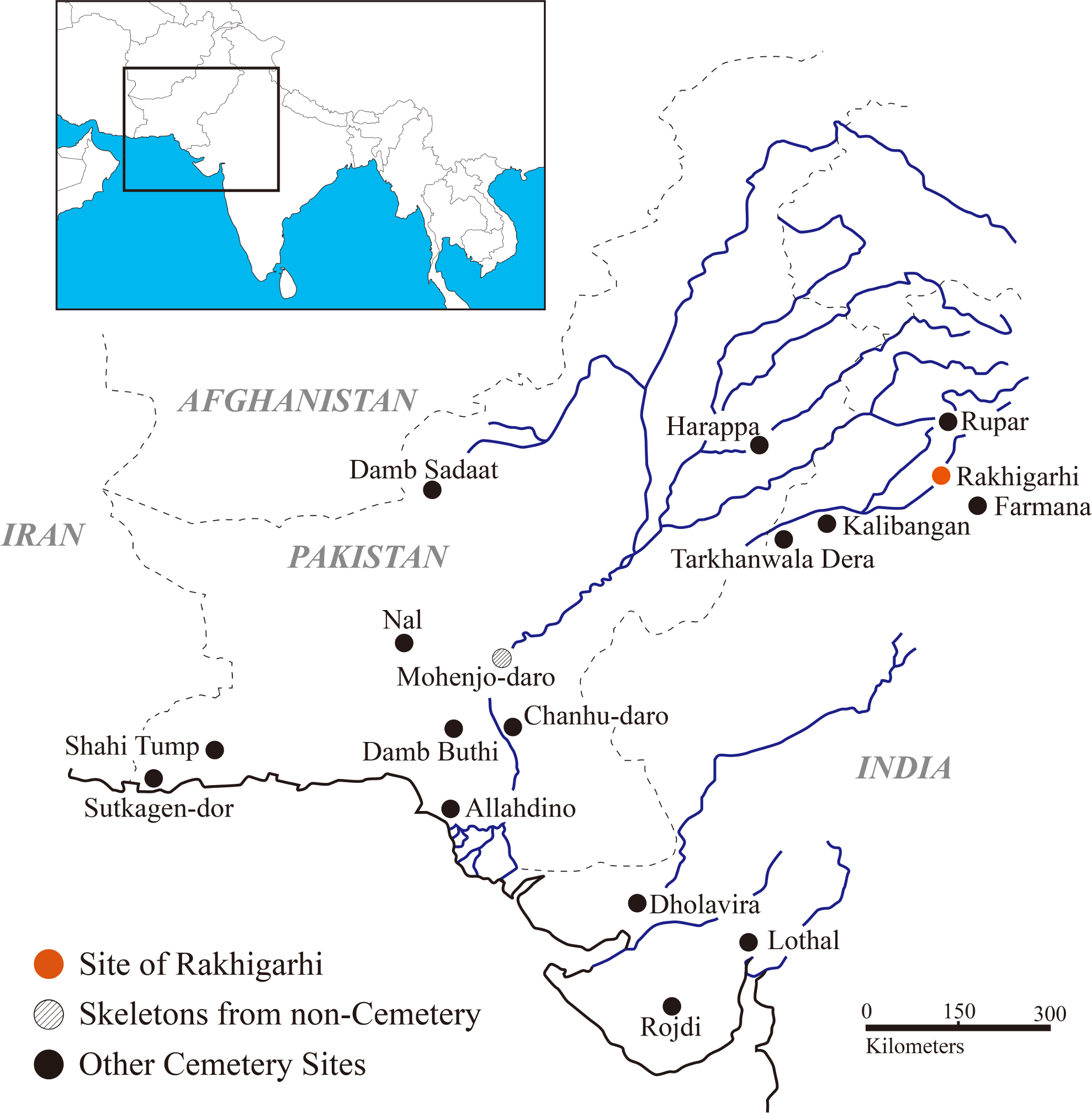New open access paper Archaeological and anthropological studies on the Harappan cemetery of Rakhigarhi, India, by Shinde, Kim, Wo, et al. PLOS One (2018) 13(2): e0192299.
Abstract:
An insufficient number of archaeological surveys has been carried out to date on Harappan Civilization cemeteries. One case in point is the necropolis at Rakhigarhi site (Haryana, India), one of the largest cities of the Harappan Civilization, where most burials within the cemetery remained uninvestigated. Over the course of the past three seasons (2013 to 2016), we therefore conducted excavations in an attempt to remedy this data shortfall. In brief, we found different kinds of graves co-existing within the Rakhigarhi cemetery in varying proportions. Primary interment was most common, followed by the use of secondary, symbolic, and unused (empty) graves. Within the first category, the atypical burials appear to have been elaborately prepared. Prone-positioned internments also attracted our attention. Since those individuals are not likely to have been social deviants, it is necessary to reconsider our pre-conceptions about such prone-position burials in archaeology, at least in the context of the Harappan Civilization. The data presented in this report, albeit insufficient to provide a complete understanding of Harappan Civilization cemeteries, nevertheless does present new and significant information on the mortuary practices and anthropological features at that time. Indeed, the range of different kinds of burials at the Rakhigarhi cemetery do appear indicative of the differences in mortuary rituals seen within Harappan societies, therefore providing a vivid glimpse of how these people respected their dead.

This is a must read for anyone willing to analyze in detail the upcoming Rakhigarhi samples, which will bring more information regarding the Neolithic population of the Indian subcontinent before the migration of Indo-Iranian peoples.
Related:
- The Indus Valley Civilisation in genetics – the Harappan Rakhigarhi project
- Mitogenomes show ancient human migrations to and through North-East India not of males exclusively
- The Aryan migration debate, the Out of India models, and the modern “indigenous Indo-Aryan” sectarianism
- New Ukraine Eneolithic sample from late Sredni Stog, near homeland of the Corded Ware culture
- Indo-European and Central Asian admixture in Indian population, dependent on ethnolinguistic and geodemographic divisions
- Asian ancestry of the Roma people in Europe
- Germanic–Balto-Slavic and Satem (‘Indo-Slavonic’) dialect revisionism by amateur geneticists, or why R1a lineages *must* have spoken Proto-Indo-European